
Walla Walla, Walawalałáma, sometimes Walúulapam, are a Sahaptin Indigenous people of the Northwest Plateau. The duplication in their name expresses the diminutive form. The name Walla Walla is translated several ways but most often as "many waters".

The Cayuse are a Native American tribe in what is now the state of Oregon in the United States. The Cayuse tribe shares a reservation and government in northeastern Oregon with the Umatilla and the Walla Walla tribes as part of the Confederated Tribes of the Umatilla Indian Reservation. The reservation is located near Pendleton, Oregon, at the base of the Blue Mountains.
The Oregon missionaries were pioneers who settled in the Oregon Country of North America starting in the 1830s dedicated to bringing Christianity to local Native Americans. There had been missionary efforts prior to this, such as those sponsored by the Northwest Company with missionaries from the Church of England starting in 1819. The Foreign Mission movement was already 15 years underway by 1820, but it was difficult to find missionaries willing to go to Oregon, as many wanted to go to the east, to India or China. It was not until the 1830s, when a schoolmaster from Connecticut, Hall Jackson Kelley, created his "American Society for the Settlement of the Oregon Country," that more interest and support for Oregon missionaries grew. Around the same time, four Nez Perce arrived in St. Louis in the fall of 1831, with accounts differencing as to if these travelers were asking for "the book of life", an idea used by Protestant missionaries, or if they asked for "Blackrobes", meaning Jesuits, thus Catholic missionaries. Either way this inspired Christian missionaries to travel to the Oregon Territory. Oregon missionaries played a political role, as well as a religious one, as their missions established US political power in an area in which the Hudson's Bay Company, operating under the British government, maintained a political interest in the Oregon country. Such missionaries had an influential impact on the early settlement of the region, establishing institutions that became the foundation of United States settlement of the Pacific Northwest.
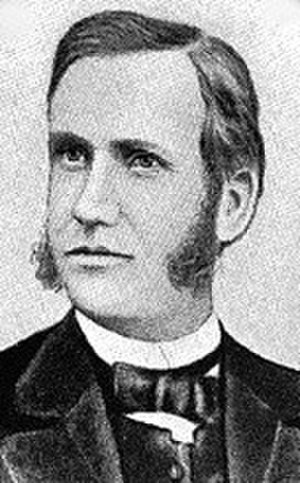
Marcus Whitman was an American physician and missionary. He is most well-known for leading settlers across the Oregon Trail, unsuccessfully attempting to Christianize the Cayuse Indians, and being killed by the Cayuse Indians in the Whitman massacre.
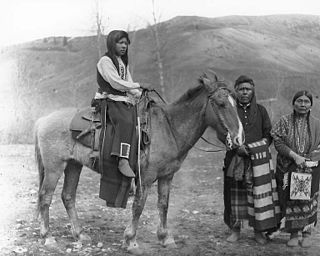
The Palouse are a Sahaptin tribe recognized in the Treaty of 1855 with the United States along with the Yakama. It was negotiated at the 1855 Walla Walla Council. A variant spelling is Palus. Today they are enrolled in the federally recognized Confederated Tribes and Bands of the Yakama Nation and some are also represented by the Colville Confederated Tribes, the Confederated Tribes of the Umatilla Indian Reservation and Nez Perce Tribe.

The Whitman massacre refers to the killing of American missionaries Marcus and Narcissa Whitman, along with eleven others, on November 29, 1847. They were killed by a small group of Cayuse men who accused Whitman of poisoning 200 Cayuse in his medical care during an outbreak of measles that included the Whitman household. The killings occurred at the Whitman Mission at the junction of the Walla Walla River and Mill Creek in what is now southeastern Washington near Walla Walla. The massacre became a decisive episode in the U.S. settlement of the Pacific Northwest, causing the United States Congress to take action declaring the territorial status of the Oregon Country. The Oregon Territory was established on August 14, 1848, to protect the white settlers.
The Cayuse War was an armed conflict that took place in the Northwestern United States from 1847 to 1855 between the Cayuse people of the region and the United States Government and local American settlers. Caused in part by the influx of disease and settlers to the region, the immediate start of the conflict occurred in 1847 when the Whitman massacre took place at the Whitman Mission near present-day Walla Walla, Washington when thirteen people were killed in and around the mission. Over the next few years the Provisional Government of Oregon and later the United States Army battled the Native Americans east of the Cascades. This was the first of several wars between the Native Americans and American settlers in that region that would lead to the negotiations between the United States and Native Americans of the Columbia Plateau, creating a number of Indian reservations.

Whitman Mission National Historic Site is a United States National Historic Site located just west of Walla Walla, Washington, at the site of the former Whitman Mission at Waiilatpu. On November 29, 1847, Dr. Marcus Whitman, his wife Narcissa Whitman, and 11 others were slain by Native Americans of the Cayuse. The site commemorates the Whitmans, their role in establishing the Oregon Trail, and the challenges encountered when two cultures meet.
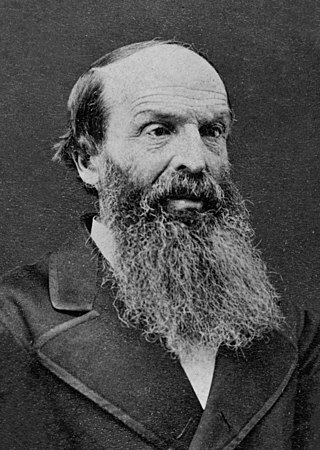
Henry Harmon Spalding (1803–1874) and his wife Eliza Hart Spalding (1807–1851) were prominent Presbyterian missionaries and educators working primarily with the Nez Perce in the U.S. Pacific Northwest. The Spaldings and their fellow missionaries were among the earliest Americans to travel across the western plains, through the Rocky Mountains and into the lands of the Pacific Northwest to their religious missions in what would become the states of Idaho and Washington. Their missionary party of five, including Marcus Whitman and his wife Narcissa and William H. Gray, joined with a group of fur traders to create the first wagon train along the Oregon Trail.

Eliza Hart Spalding (1807–1851) was an American missionary who joined an Oregon missionary party with her husband Henry H. Spalding and settled among the Nez Perce People called the nimiipuu in Lapwai, Idaho. She was a well-educated woman who was among the first missionaries to learn a Native American language. She developed a written version of the language and printed Bible story lessons and hymns in the Nez Perce language. Her hymnal was the first book written in the Nez Perce language. She taught hundreds of native people by first teaching a few people a lesson or a song, and after they memorized it, they taught it to groups to people.

Narcissa Prentiss Whitman was an American missionary in the Oregon Country of what would become the state of Washington. On their way to found the Protestant Whitman Mission in 1836 with her husband, Marcus, near modern-day Walla Walla, Washington, she and Eliza Hart Spalding became the first documented European-American women to cross the Rocky Mountains.

Piupiumaksmaks was head chief of the Walla Walla tribe and son to the preceding chief Tumatapum. His name meant Yellow Bird, but it was often mistranslated as Yellow Serpent by Europeans.
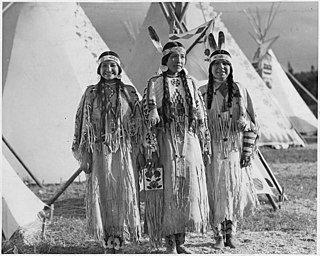
The Sahaptin are a number of Native American tribes who speak dialects of the Sahaptin language. The Sahaptin tribes inhabited territory along the Columbia River and its tributaries in the Pacific Northwest region of the United States. Sahaptin-speaking peoples included the Klickitat, Kittitas, Yakama, Wanapum, Palus, Lower Snake, Skinpah, Walla Walla, Umatilla, Tenino, and Nez Perce.

The Sager orphans were the children of Henry and Naomi Sager. In April 1844 the Sager family took part in the great westward migration and started their journey along the Oregon Trail. During it, both Henry and Naomi died and left their seven children orphaned. Later adopted by Marcus and Narcissa Whitman, missionaries in what is now Washington, they were orphaned a second time, when both their new parents, as well as brothers John and Francis Sager, were killed during the Whitman massacre in November 1847. About 1860 Catherine, the oldest daughter, wrote a first-hand account of their journey across the plains and their life with the Whitmans. Today it is regarded as one of the most authentic accounts of the American westward migration.
The Wascopam Mission or Dalles Mission was a branch of the Methodist Mission opened at Celilo Falls in 1838. Among the tribes proselytized were members of the Cayuse, Klickitat, Nez Perce, Shasta, Tenino, Walla Wallas, and Wasco-Wishram. In 1847 the mission was closed and later became the site of Fort Dalles.
Pierre Chrysologue Pambrun was a French Canadian militia officer and later a fur trader in the service of the Hudson's Bay Company. Pambrun fought against the United States in the War of 1812, in particular the Battle of the Châteauguay. He joined the HBC during a time of turmoil with its competitors, the North West Company. After the Battle of Seven Oaks, he was among those held captive by men employed by the NWC.
The Walla Walla expeditions were organized during the mid-nineteenth century to enrich the Sahaptian peoples of the Columbian Plateau with cattle purchased in Alta California. Among the first expedition was Walla Walla leader Piupiumaksmaks, Garry of the Spokanes and Cayuse headman Tawatoy. They arrived at New Helvetia in 1844. A confrontation erupted with the son of Piupiumaksmaks, Toayahnu, being killed by an American. A second expedition was organized, returning to New Helvetia in 1846, where two thousand cattle was purchased. When the expedition returned to the Columbian Plateau, members were ill with measles. The disease was consequently spread across the Pacific Northwest and was a major cause of the Whitman massacre.
The history of Walla Walla, Washington begins with the settling of Oregon Country, Fort Nez Percés, the Whitman Mission and Walla Walla County, Washington.
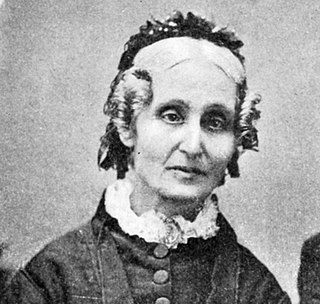
Mary A(u)gusta Dix Gray or Mrs. William H. Gray was an early American missionary to Nez Perce people in the Oregon Territory in 1838. She was one of the first six European American women to cross the Rocky Mountains on what would become the Oregon Trail.
The Cayuse Five were five members of the Native American tribe, the Cayuse of Oregon who were hanged for murder, in 1850. Their names were Clokomas, Isiaasheluckas, Kiamasumkin, Telakite, and Tomahas—note how these names are spelled varies.













